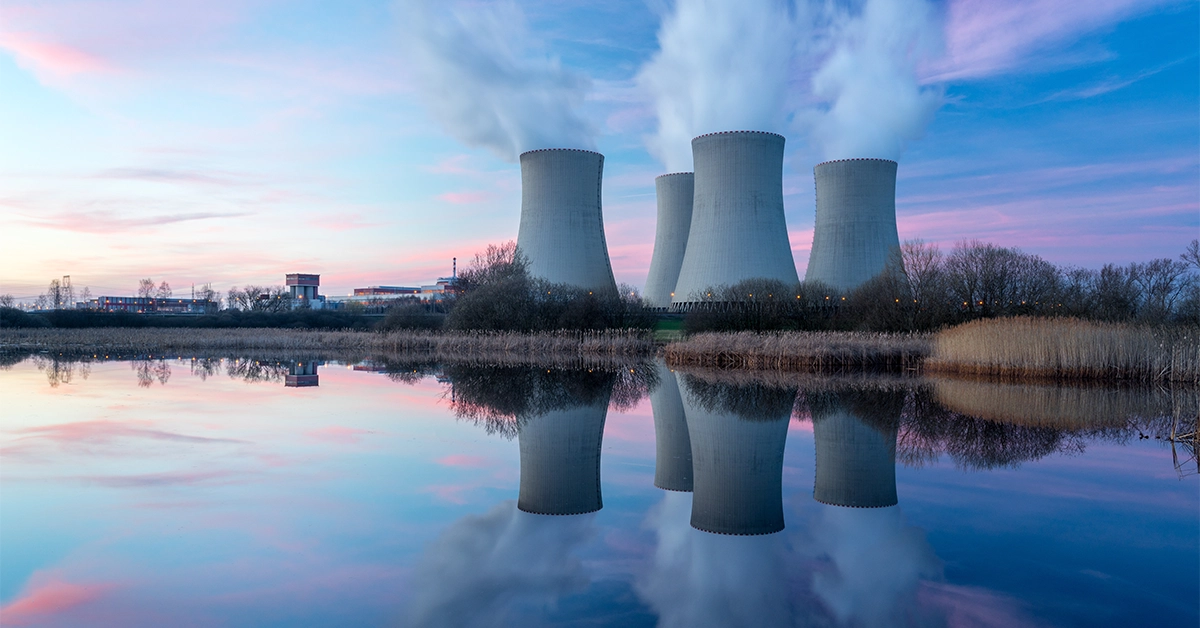
We would like to introduce you a little bit more into each one of these categories in this two-piece article starting with non-renewable sources since they are still the most common source of electricity in the world. As you might guess these include fossil fuels (coal, natural gas, oil, and heating oil) and nuclear energy. Fossil fuels are the remains of ancient plant and animal life. Through millions of years, the high temperatures and pressures in the underground have transformed these remains into coal, oil and natural gas. Unlike the electricity itself, fossil fuels can be stored in large quantities. Many power plants have been using fossil fuels for decades and have therefore repaid their procurement costs. Not only do they increase user profits but they reduce their direct costs. This results in the slower expansion of renewable energy resources, as they require large investments with long-term returns.
Fossil fuel power stations burn coal, oil, or gas to produce heat in the form of steam that drives large turbines producing electricity. These devices reliably produce electricity over long periods of time. However, combustion of fossil fuels produces large amounts of carbon dioxide (CO2), methane (CH4), sulfur oxides (such as SO2), and other harmful gases and solids into the atmosphere, which are causing climate change, acid rains and soil and water contamination. Incineration of coal involves the redistribution of natural radioactivity from the Earth’s subsoil to the biosphere of the environment. In the case of older power plants with low efficiency of trapping fly ash and low-quality coal, the radiation burden of the population near the coal-fired power plants is higher than that of nuclear power plants. Methods have been developed over the years to diminish the content of these pollutants. Most nations push for their use by setting basic environmental standards. Of course, the cost of performing the necessary controls contributes to an increase in the price of electricity.
Most climate stabilization scenarios under consideration by the UN Intergovernmental Panel on Climate Change (IPCC) require a rapid increase in the world share of low carbon electricity with renewable energy sources (mainly biomass, water, wind and solar), nuclear power and carbon capture (CCS). The latest report by the IPCC issued on November 8th says the planet will reach the crucial threshold of 1.5 degrees Celsius (2.7 degrees Fahrenheit) above pre-industrial levels by as early as 2030, precipitating the risk of extreme drought, wildfires, floods and food shortages for hundreds of millions of people.
In recent years, much is being discussed about the use of nuclear energy. Advocates claim that nuclear energy is a sustainable source of low carbon energy with very little environmental impact, as opposed to fossil fuels. Opponents argue that nuclear energy is a threat to human health and the environment. Problems are mainly fuel extraction, radioactive nuclear waste storage and decommissioning of old nuclear power plants. Nuclear power plants are thermal power plants in which heat is obtained by digesting nuclear fuel, mostly enriched uranium in a nuclear reactor. They also have high investment costs, including decommissioning costs, but low direct fuel costs (mining and processing). Nuclear energy supplies more than 10% of global electricity but more than 70% in France. The most significant growth in nuclear power generation is currently achieved by Asia, in particular, China, India, and South Korea.
Even though renewable energy is becoming cheaper than energy from non-renewables, ability to store energy in form of fossil or nuclear fuel is posing a big advantage and it is a reason why we can see an increase in fossil fuel back-ups with every increase in capacity of solar and wind power sources.
Accumulation is therefore needed as a process that occurs at all times in the energy chain and involves all participants in the energy market. The synergistic effects thus obtained maximize the positive accumulation effects and reduce the need to maintain fossil fuel backups. Over time, with the ever-decreasing cost of batteries and the impact of new technologies such as FUERGY, it is possible that the need to maintain fossil sources is completely removed.
Do you find this blog interesting? Keep an eye on our latest news on social media, join our newsletter or follow us on Telegram!
We are living in the future of energy. Are you?





